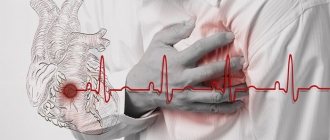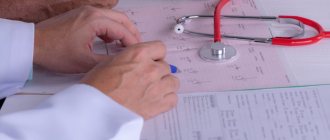Vegetovascular dystonia (VSD) is a syndrome that can be caused by the characteristics of the patient’s body or provoked by various external and internal factors. VSD often worsens in the fall. Attacks that occur every day exhaust a person and disrupt the quality of life. Drug therapy for exacerbation of VSD is often ineffective.
Doctors at the Yusupov Hospital provide preventive treatment for patients suffering from vegetative-vascular dystonia. Neurologists, endocrinologists, therapists, and gastroenterologists collectively decide on the patient’s examination regimen. Severe cases of vegetative-vascular dystonia are discussed at a meeting of the Expert Council, in which candidates and doctors of medical sciences take part. The medical staff is attentive to the wishes of patients and takes into account their emotional background.
Why does an attack of VSD occur?
Vegetative-vascular crisis occurs due to improper functioning of the autonomic nervous system. It is based on a critical situation to which the body reacts by releasing a high concentration of certain biologically active substances into the blood: amino acid derivatives, steroid, protein or peptide hormones. And the manifestations of the crisis depend on which substance will have an effect on the body.
There are many reasons that provoke an attack of VSD. This may be physical or emotional overload, intoxication, disruption of the usual rhythm of life, previous surgery, severe infectious diseases, exposure to medications, weather changes, alcohol intake, premenstrual syndrome, etc.
Symptoms of vegetative-vascular dystonia
VSD syndrome can be of a constitutional nature, occurs against the background of endocrine changes, or develops with organic lesions of the central nervous system. Signs of constitutional VSD are:
- sweating;
- rapid change in skin color;
- fluctuations in heart rate and blood pressure;
- causeless rises in temperature to 39.0-37.10.
Patients do not tolerate physical and mental stress and changing weather conditions well.
The VSD syndrome, which developed during puberty against the background of endocrine dysfunction, is characterized by the following manifestations:
- vegetative-vestibular crises, which begin with dizziness and occur with a predominance of vagoinsular symptoms;
- hunger, thirst, libido;
- thermoregulation disorders, pathological paroxysmal drowsiness;
- attacks of temporal lobe epilepsy.
Hypothalamic syndrome is characterized by various combinations of autonomic, endocrine, metabolic and trophic disorders, which are caused by damage to the hypothalamus and its closest connections. Characteristic symptoms of VSD in women in the acute stage:
- ·early menopause;
- changes in the thyroid gland of hypothalamic origin;
- acromegaloid phenomena.
The electroencephalogram reveals changes that indicate the involvement of deep brain structures in the process. Damage to the hypothalamus is characterized by sleep and wakefulness disorders in the form of difficulty falling asleep, drowsiness during the day and superficial restless sleep at night.
When the connections between the hypothalamus and the temporal lobes of the brain are damaged, symptoms of temporal lobe epilepsy appear:
- aura 1–3 minutes with sensations of peristalsis, nausea, abdominal pain;
- pain in the heart area, rapid heartbeat, arrhythmia;
- labored breathing;
- increased salivation;
- involuntary chewing, swallowing;
- sweating followed by loss of consciousness and tonic-clonic convulsions.
If connections with the brain stem are affected, neurologists determine dilation of the pupils, dysfunction of the reticular formation with signs of narcolepsy, a neurological disorder in which a person loses the ability to control his own condition), cataplexy (a state of sudden loss of muscle tone while fully maintaining consciousness). Patients' sleep and wakefulness are disturbed.
The similarity of some symptoms of VSD with signs of endocrine diseases is the reason why doctors at the Yusupov Hospital conducted additional examinations. The manifestation of adrenergic crises creates the need to exclude pheochromocytoma. To exclude it, patients undergo suprarenography, pyelography, computed tomography, and scintigraphy. A urine test is performed during an attack to determine the level of catecholamines.
With VSD, there are no organic changes in all body systems; at the same time, functional disorders are determined, especially in the cardiovascular and digestive systems. Symptoms of VSD are most pronounced during an exacerbation.
Patients present the following complaints:
- weakness, fatigue, lethargy, especially in the morning;
- unpleasant sensations, discomfort or stabbing, pressing, burning, squeezing pain in the heart area of varying intensity;
- sensations of lack of air, dissatisfaction with inhalation, cough;
- anxiety, sleep disturbances, restlessness, irritability, excessive concentration of attention on the unpleasant symptoms of one’s illness;
- frequent headaches, dizziness;
- increased sweating;
- lability of blood pressure and vascular tone.
Depending on the prevailing changes in vascular tone, normotensive, hypotensive, hypertensive and mixed types of vegetative-vascular dystonia are distinguished. With the hypotonic type of VSD, signs of vascular insufficiency come to the fore. Blood pressure is below 100/60 mmHg. The patient is concerned about rapid fatigue, weakness, and a tendency to change blood pressure when moving the body from a horizontal to a vertical position. Fainting often occurs, preceded by darkening of the eyes and dizziness.
With the hypertensive type of VSD, blood pressure rises to more than 140/90 mm Hg. The leading complaints are:
- headache;
- fast fatiguability;
- rapid heartbeat, up to paroxysmal tachycardia.
In the area of the heart, areas of increased pain sensitivity are sometimes identified. Hypotonic and hypertensive types of VSD are accompanied by redness of the skin of the neck and face, coldness of the extremities, and marbling of the skin pattern.
If the patient is bothered by pain in the heart area, sometimes sharp, burning, stabbing, often poorly localized, palpitations, a feeling of interruptions in the work of the heart - this is a cardiac type of VSD.
How to prevent or stop an attack of VSD
If you want to prevent an attack of VSD or get out of it with the least loss to the body, you need to analyze and, if possible, eliminate the conditions that provoke the development of this condition.
If the cause is fear, severe emotional shock or another external irritant, you need to try to take control of your emotions, think about something distracted, close your eyes, massage your eyelids. To stop an attack of VSD, it is also worth providing an influx of fresh air (open a window, unbutton a collar, or get rid of items of clothing that impede breathing). To improve cerebral circulation, you should lie down or at least take a comfortable sitting position.
To cope with an attack of migraine-like VSD, you need to go to a quiet place where there is no bright light. If your blood pressure increases or decreases, it is recommended to take the appropriate medication. A hot foot bath or a warm blanket will help overcome chills. In addition, at the first sign of an approaching panic attack, it is recommended to eat something sweet and drink a glass of water in slow sips.
Since it is not always possible to relieve an attack of VSD on your own, experts recommend taking a sedative.
Without professional medical help, panic attacks can become more frequent, gaining strength each time. Therefore, people prone to repeated exacerbations should definitely visit a neurologist. An experienced doctor will be able to advise how to get rid of an attack of VSD, select the optimal treatment regimen and tell you what to do during the next vegetative-vascular crisis.
Diagnostics
To begin with, the doctor, during a conversation with the patient, collects a detailed anamnesis - finds out the complaints, their nature, frequency of occurrence, the presence of a hereditary factor (are there people in the family who suffer from confirmed VSD).
Then a general examination is carried out, attention is paid to the patient’s behavior and his emotional background.
Due to the presence of symptoms similar to those of various other diseases (arrhythmia, hypertension, pathologies of the thyroid gland, gastritis, etc.), each patient with suspected VSD must undergo a detailed therapeutic examination in a clinical setting. To confirm the diagnosis of VSD, it is necessary to absolutely exclude diseases with similar symptoms. For this purpose, laboratory tests are prescribed:
- general blood analysis;
- general urine analysis;
- liver and kidney function indicators;
- analysis of thyroid hormone levels;
- clarifying tests at the discretion of the doctor.
Next, a referral is given for instrumental examinations, of which the most frequently used are:
- electrocardiography (ECG);
- echocardiography;
- 24-hour Holter blood pressure monitoring;
- fibrogastroduodenoscopy;
- Ultrasound of the abdominal organs, kidneys, neck vessels, thyroid gland;
- chest x-ray;
- spirometry;
- bicycle ergometry.
Sometimes the doctor requires additional diagnostic methods, such as computed tomography (CT), magnetic resonance imaging (MRI), electroencephalography, colonoscopy and others. Various functional tests are also carried out (psycho-emotional, orthostatic, physical exercise, pharmacological).
Measures to prevent attacks of VSD
Unfortunately, a universal panacea to overcome an attack of VSD has not yet been found. To cope with this problem, a person should completely reconsider his usual lifestyle.
First of all, it is necessary to eliminate nervous overload, establish a work and rest schedule and change your diet, giving preference to foods rich in potassium and magnesium. You need to sleep in a well-ventilated area and at least 8 hours a day. It is worth reducing the amount of time you spend in front of a TV screen or computer monitor. If this is not possible due to the nature of your professional activity, you must take breaks, setting aside time for rest and physical activity during the day.
Daily walks in the fresh air, cycling, jogging, and aerobics are very useful. And, of course, it is necessary to put an end to bad habits that can worsen the course of the disease - smoking, excessive alcohol consumption, etc.
Treatment
Treatment of vegetative-vascular dystonia is the subject of enormous controversy in the scientific community. Who should make this diagnosis? Neurologist, therapist or psychiatrist? How to treat this condition and how – symptomatically or try to find the mechanisms of pathogenesis of this condition?
But disputes are disputes, and on this site I share my opinion. The most important thing is non-drug therapy, namely psychological support, stabilization of lifestyle (sleep, work conditions, family situation, bad habits, etc.); in the presence of panic conditions, consultation with a psychiatrist and the prescription of anti-anxiety therapy are indicated. In all cases, restorative therapy will not be harmful (including B vitamins, their derivatives, in particular Enerion, such “soft” drugs as Mexidol, Neurox, Ethoxidol, Armadin, Fnibut, etc.). In the presence of dizziness, the prescription of vertigolytics (Betaserc, Vestibo, etc.) is controversial, because there is usually no substrate for their work. It is more important to use vestibular rehabilitation and vestibular gymnastics techniques than drug treatment.
Chronic physical weakness
This symptom is combined with low blood pressure, tachycardia, and anxiety. The physical condition of such people depends very much on emotions. If possible, you need to maintain a positive attitude, not accumulate negative thoughts, and get more rest.
Regardless of the cause of your weakness due to vegetative-vascular dystonia, this problem can be solved with the help of amino acids, which normalize metabolic processes in all tissues, but primarily in the nervous and cardiovascular systems. The amino acids glycine, cystine and glutamic acid, when combined, improve energy production in cells and reduce oxidative stress. The drug Eltacin® contains these three amino acids exactly in the form in which they can provide maximum benefit in cases of impaired autonomic regulation, therefore it is prescribed as the main one in the treatment of VSD.
Cost of initial appointment, diagnostic examinations and treatment
As for the initial appointment, its cost in most cases is low; in fact, it is a consultation procedure. But one should not neglect its importance - an experienced doctor is able to recognize characteristic symptoms and notice even small but important manifestations of abnormalities.
The price of diagnostic procedures and laboratory tests may vary significantly in different clinical cases. For one patient, general tests and several examinations will be enough; for another, diagnosis may take longer and require additional studies and tests. This is due to both the complex nature of VSD and the individual characteristics of each patient’s body.
A similar picture is typical for treatment. Its cost is determined by many factors; sometimes the therapeutic process has to be adjusted. To roughly navigate the prices for diagnosis and treatment of VSD in Moscow, you can familiarize yourself with the corresponding table of costs for the most common diagnostic procedures.
Irritable weakness
This condition occurs with nervous and physical exhaustion. It is difficult for a person to concentrate, there is no strength to explain or listen to something for a long time, he quickly gets tired from any physical effort and even from walking. To do any work that requires mental effort, he needs to be left alone and in complete silence.
Most often, school-age children suffer from irritable weakness, often teenagers whose autonomic regulation is impaired. It is difficult for them to regain strength in conditions of constant mental and emotional stress. Irritability increases with the onset of hormonal changes.









